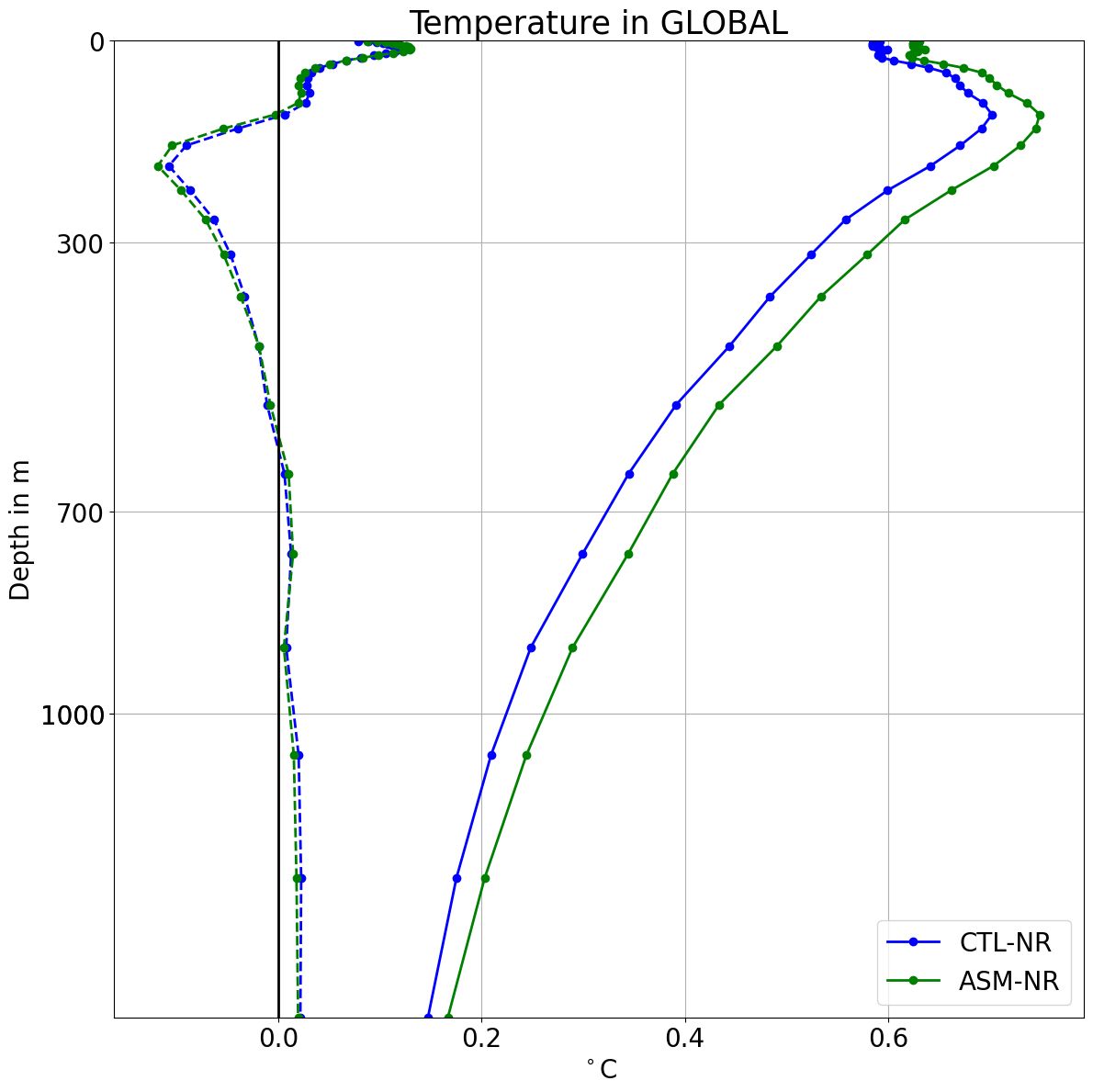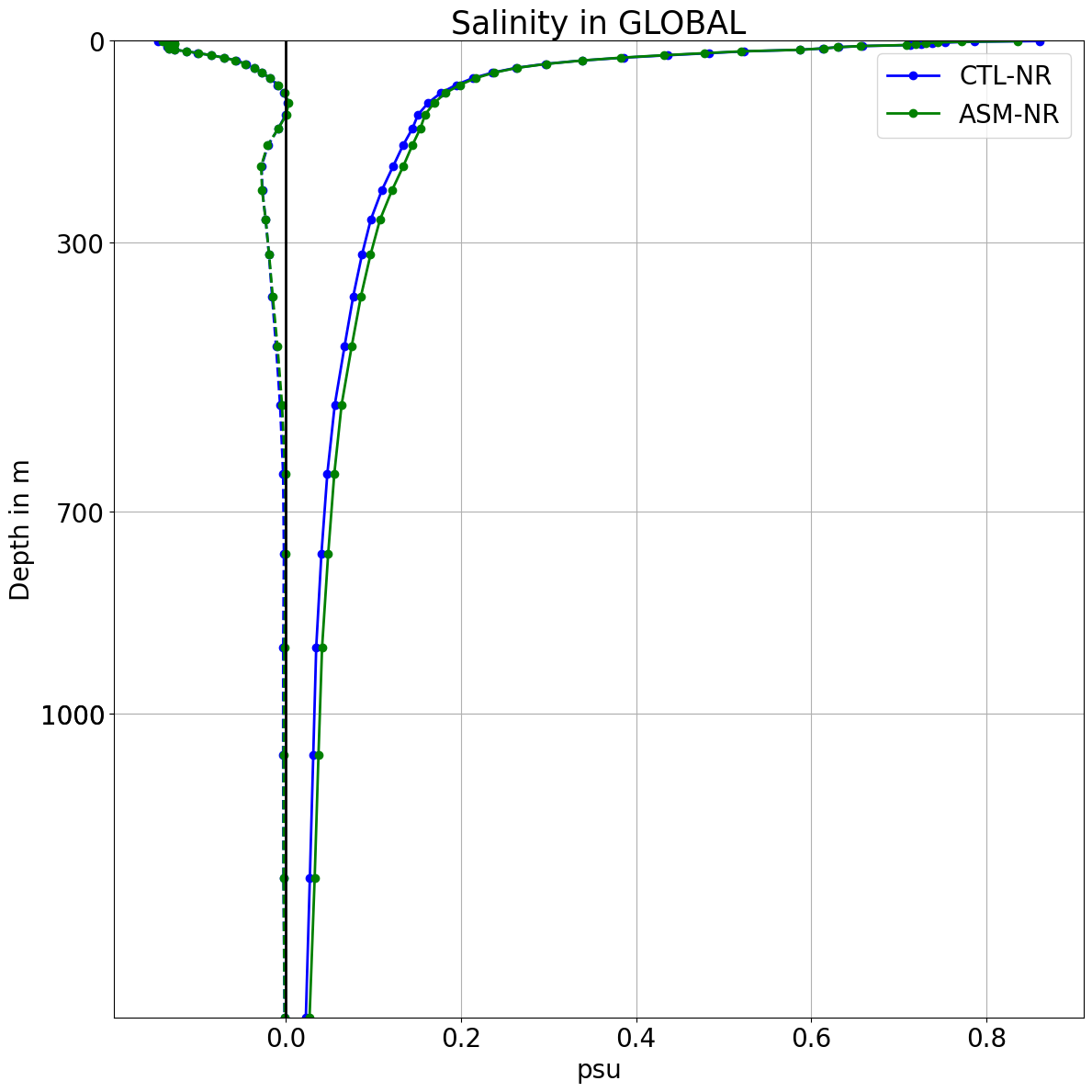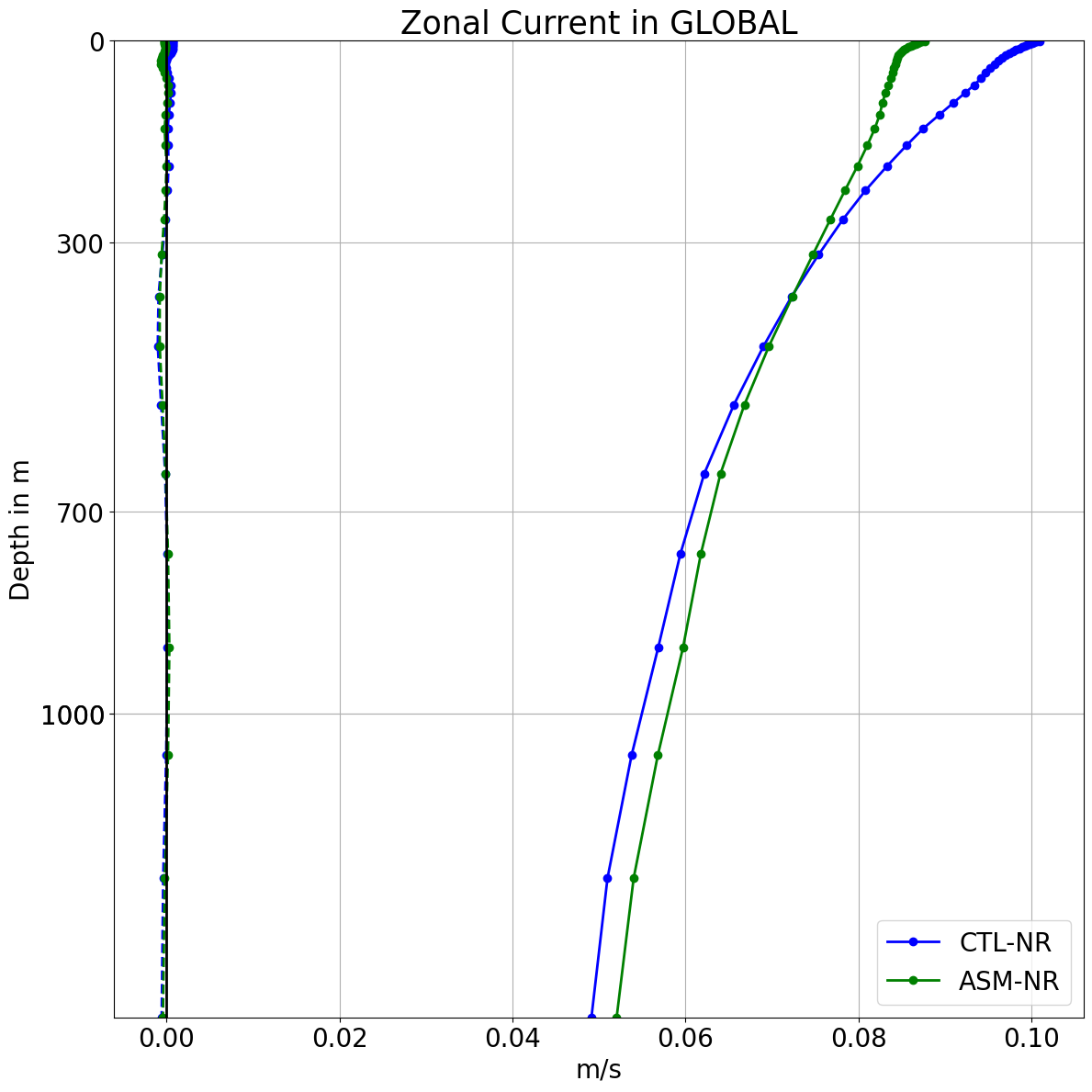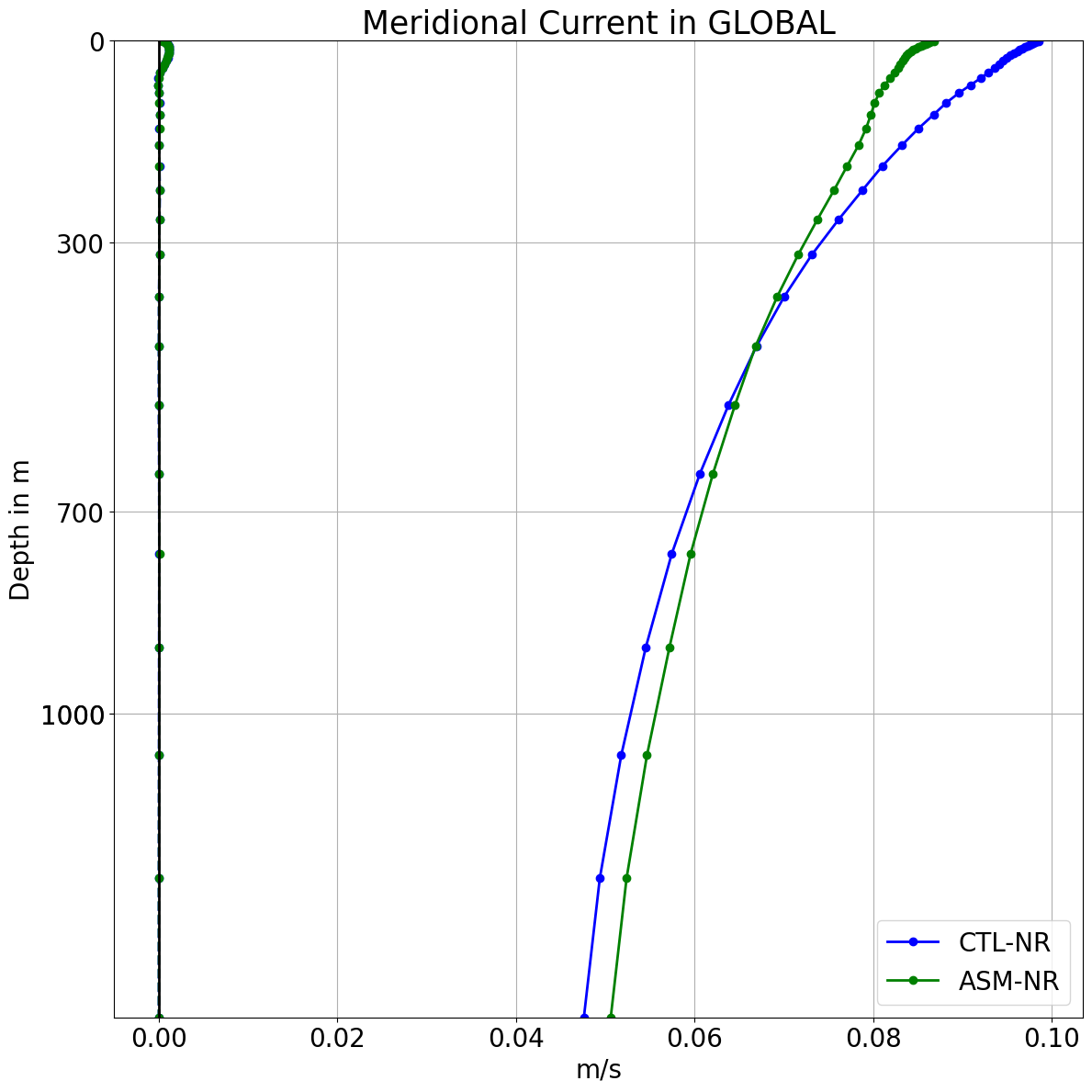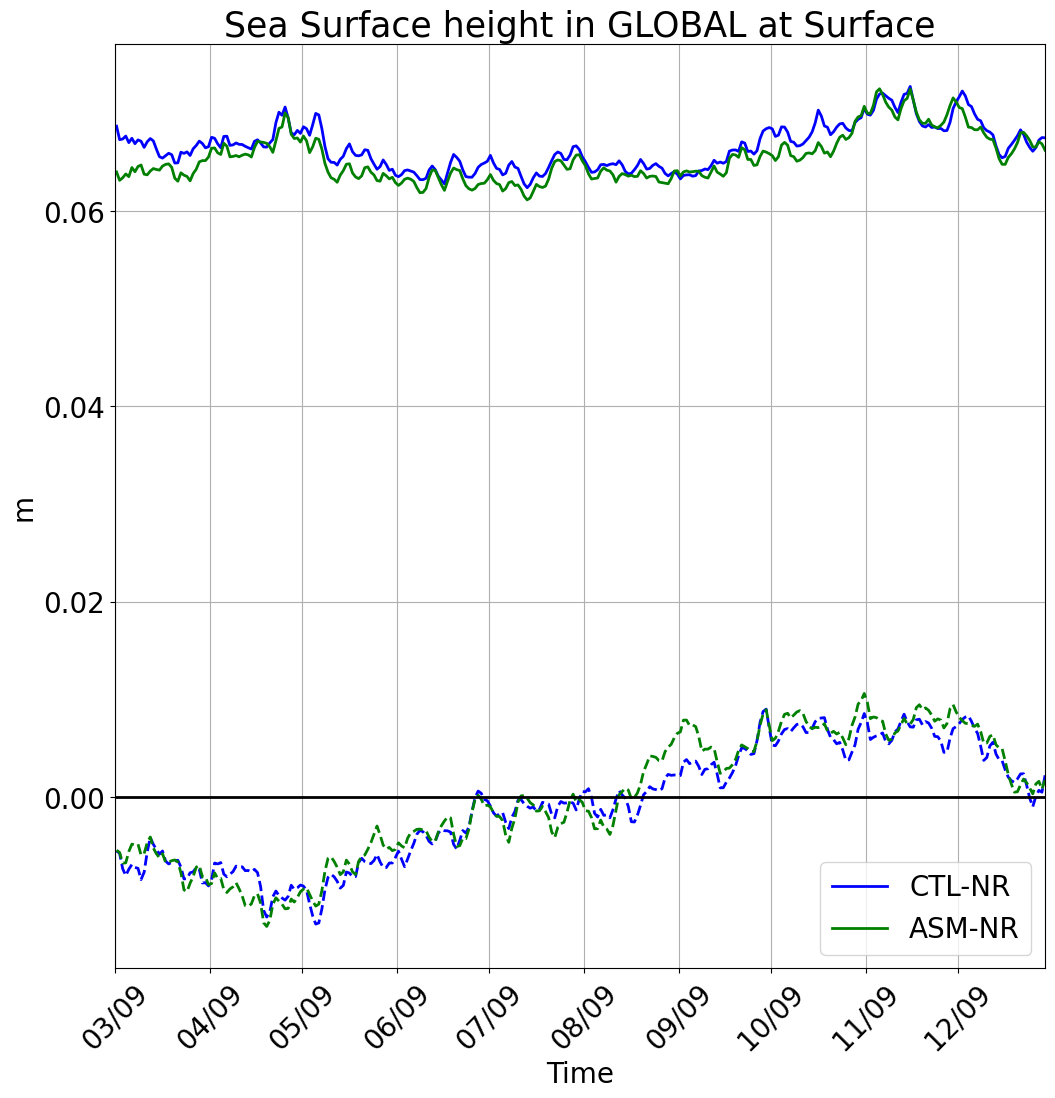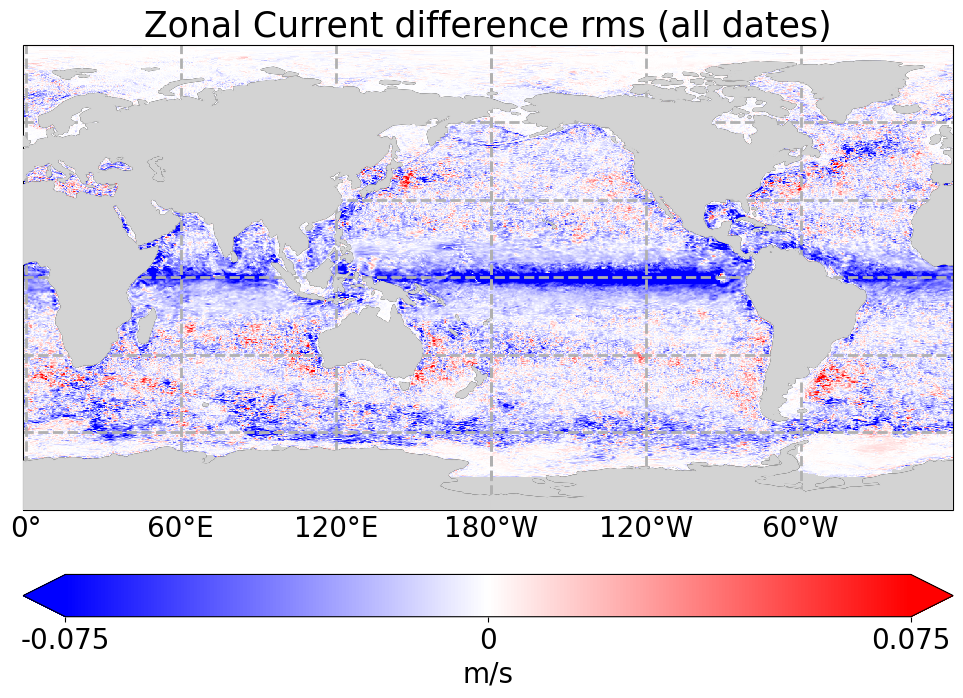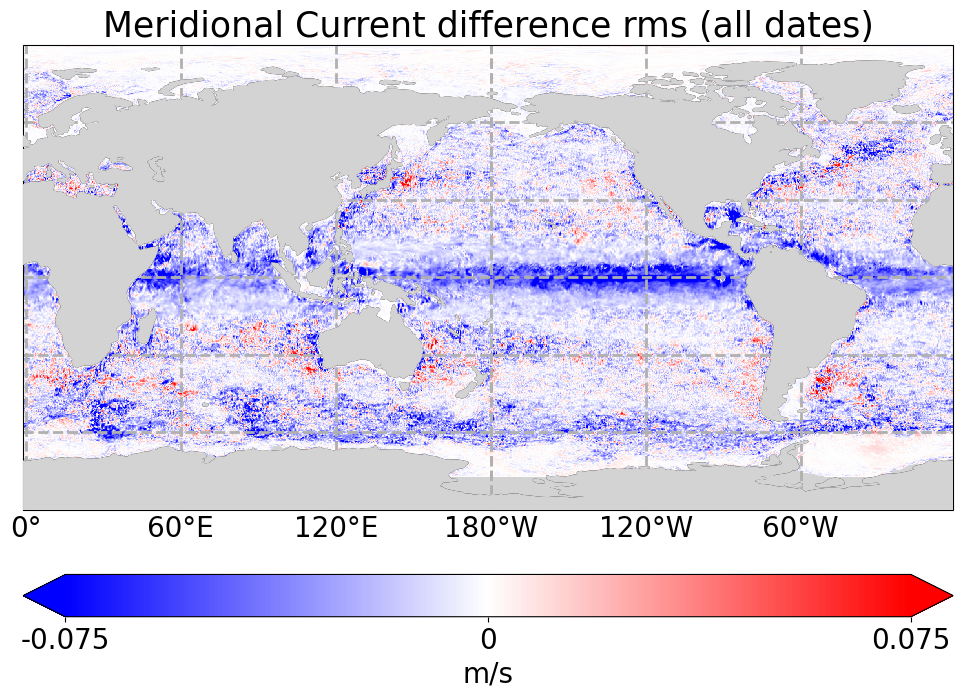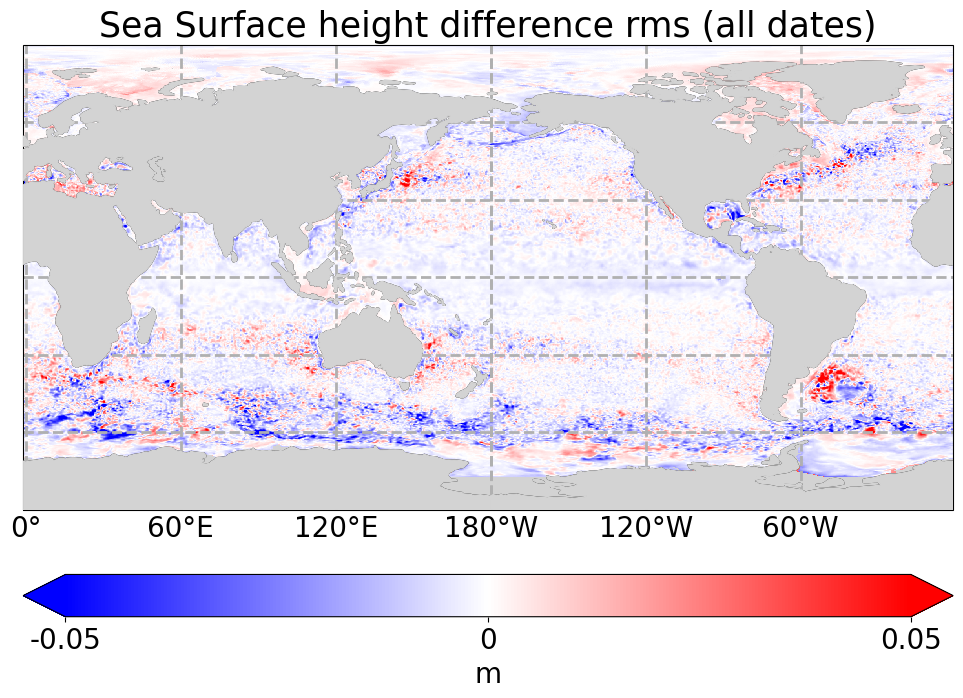Webstory 4: TSCV observations assimilated in an ocean global configuration
WS4: TSCV observations assimilated in an ocean global configuration
Experiments have been run to assess the impact of assimilating TSCV data in the Mercator Océan International forecasting system. Preliminary results show a nice improvement for the surface and sub-surface currents.
Isabelle Mirouze
December 2022
Download as pdf
1. Introduction
The impact of assimilating TSCV data in the Mercator Océan International forecasting system (SAM) is assessed through Observing System Simulation Experiments (OSSEs). Two experiments are run with the same settings and configuration, assimilating the same synthetic observation networks simulated from a high resolution free run (Nature Run; NR). Only one of the experiments (ASM) assimilates synthetic TSCV observations. Its comparison to the Control experiment (CTL) allows us to highlight the impact of such data.
2. Design
| Resolution | Atmosphere Fluxes | Classical Observations | TSCV Observations | |
| Nature Run (NR) | 1/12° | ECMWF IFS | – | – |
| Control Run (CTL) | 1/4° | ERA5 | SST T/S profiles SSH |
– |
| Assimilation Run (ASM) | 1/4° | ERA5 | SST T/S profiles SSH |
SKIM L2 |
Table 1 : Configuration of the experiments and observations assimilated.
Table 1 presents the main configuration of the experiments and the type of observations assimilated. The CTL and ASM experiments are run on a lower (1/4°) resolution than the NR (1/12°). They are both set up as close as possible to the operational system. The atmosphere fluxes are different from the NR to specifically add an extra incertitude in the currents. Whereas the NR is a free run without any data assimilated, the CTL and ASM experiments assimilated classical, although synthetic, observations such as sea surface temperature (SST) maps, temperature (T) and salinity (S) profiles, and sea surface height (SSH). Note that none of the experiments assimilate any sea ice concentration (SIC) observations. All the observations are generated from the NR and a consistent error is added. Besides these classical observations, the ASM experiment assimilates along-track TSCV observations generated from the NR but without any noise. Still, an observation error is set up in the ASM experiment that corresponds to a 2 cm/s mapping error plus a representativity error that can reach up to 0.1 m/s at the Equator.
3. Results
Statistics on the difference between the experiments CTL or ASM with the NR are compared. As shown on Figure 1, Temperature is globally slightly degraded at all depths (up to 0.05°C) whereas there is no significant impact on salinity. At the equator however, the ASM experiment is closer to NR at surface and sub-surface for both variables. SSH RMSE is slightly improved. A global decrease of 1.5 cm/s in RMSE can be spotted at surface for both current components in the ASM experiment. This improvement goes down to 300 m, after which a slight degradation of about 0.2 cm/s can be spotted. This degradation at depth is under investigation.
Figure 1 : Temperature (top left), salinity (top right), zonal (middle left) and meridional (middle right) profiles, and sea surface height time series (bottom left) difference from CTL (blue) or ASM (green) with NR. Plain lines stand for RMSE and dashed lines for mean.
Figure 2 : Comparison of ASM and CTL RMSE with respect to NR for zonal (top left) and meridional (top right) currents, and sea surface height (bottom left). Blue shades indicates that ASM is closer to NR than CTL.
At surface, the currents are generally improved, especially for the dynamical regions (Equator, WBCs, ACC) as shown on Figure 2. However, there are slight degradations in particular locations (spot in the Kuroshio, Argentinian coast, Eastern coast of Australia, …). Compared with the SSH, the patterns of improvement and degraded locations are similar, except for the Equator. This suggests that the improvement is mostly geostrophic apart from the Equator.
4. Conclusions
OSSEs have been run to assess the impact of assimilating TSCV data. Although these observations are assimilated without any noise, the study allows first insights on the impact of such data in a forecasting system. All variables are improved at the Equator from surface down to 300 m. Currents are nicely improved in all other regions as well above 300 m. Further assessment is on-going. This study shows the potential of TSCV data to improve analyses and possibly forecasts.
